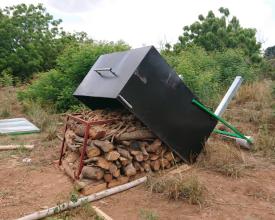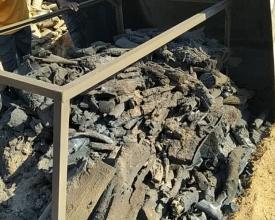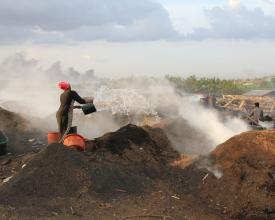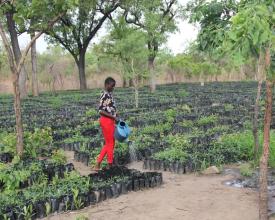
Restauración del paisaje forestal mediante una cadena de valor sostenible de la dendroenergía
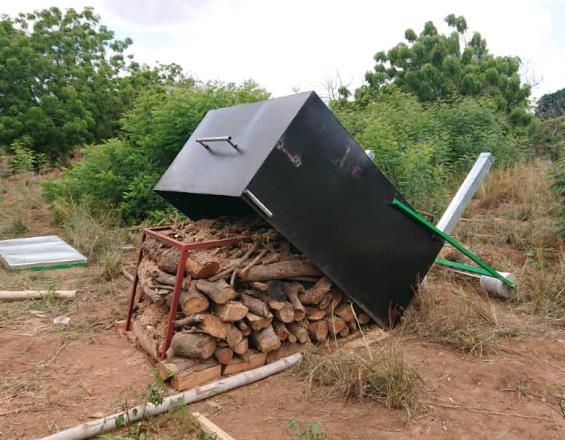
La superficie forestal de Ghana disminuye en torno a un 2% cada año. Gran parte de la madera talada se utiliza como leña y para carbón vegetal, que son los principales motores de la degradación forestal en el norte y centro de Ghana. El consumo de estas fuentes de energía aumenta constantemente, y el carbón vegetal se produce principalmente mediante el uso de hornos tradicionales de tierra poco eficientes. Además, la tala de madera no está bien regulada y amenaza a especies arbóreas valiosas como el karité y el palo de rosa. La solución aquí presentada apoya a sus instituciones asociadas en la restauración de los paisajes forestales, conjuntamente con pequeños agricultores y grupos de productores organizados de las regiones productoras de carbón vegetal. La solución incluye la producción y el uso sostenibles y eficientes de la dendroenergía mediante hornos y cocinas mejorados, la mejora del marco político e institucional de la dendroenergía sostenible, la restauración de los paisajes forestales y la difusión del enfoque por toda la región.
Contexto
Défis à relever
Ubicación
Impactos
La forestación de zonas degradadas reduce la presión sobre los recursos madereros de los bosques naturales y las zonas agroforestales existentes. La rehabilitación de los paisajes forestales evita las emisiones de gases de efecto invernadero derivadas de la deforestación y la degradación de los bosques y restaura los sumideros naturales de carbono, lo que se traduce en un aumento del secuestro de carbono que contribuye a mitigar el cambio climático. Además, la solución promueve un uso más eficiente de la madera energética, lo que a su vez contribuye a un menor consumo de madera y, por tanto, de nuevo a una reducción de las emisiones de gases de efecto invernadero. A través de la formación, las comunidades rurales aumentan sus conocimientos y capacidades en el establecimiento de viveros de árboles y plantaciones de madera energética, en la restauración y gestión de sus recursos naturales y en la producción sostenible y eficiente de carbón vegetal. La protección de los bosques naturales, incluidas las especies arbóreas valiosas, y la capacitación en el uso y la comercialización de productos forestales no madereros proporcionan otras fuentes de ingresos sostenibles. Una mejor regulación de la producción y el comercio de carbón vegetal reduce las actividades insostenibles e ilegales. Mediante la introducción de cinturones verdes contra incendios y sistemas agroforestales, se reducen a largo plazo los daños causados en las explotaciones por los incendios forestales, la erosión eólica, las inundaciones y las sequías. La experiencia adquirida se difundirá a escala regional en África Occidental.
